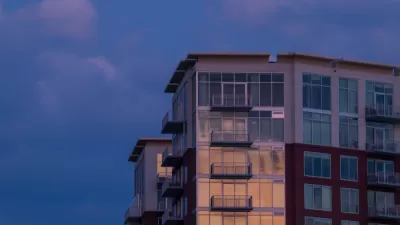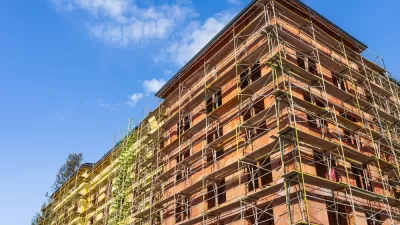Facing a severe housing shortage, Washington, D.C. grapples with how to approach the challenges presented by local stakeholders who oppose any and all development.

"Like the rest of the Washington region, D.C. is facing a severe housing shortage, and efforts to address it are regularly stymied by residents who want to insulate their neighborhoods from change," writes Ally Schweitzer.
In this discussion, the District's housing concerns are placed in context by the region's housing concerns. Earlier in September, the Metropolitan Washington Council of Governments put out a non-binding resolution calling on local governments to meet specific, ambitious housing targets.
"As of now, about 245,000 new housing units are forecast to be built in the region by 2030. The council proposes building 75,000 more homes on top of that to match the pace of job growth," wrote Schweitzer in an earlier article on that regional pronouncement.
As D.C. starts to consider its role in that equation, Schweitzer suggests that one of the causes of the District's housing shortages will remain one of its persistent challenges: "a formidable and constant political challenge is found among homeowners who appeal zoning decisions in court, testify against development-related legislation or find other ways to impede or shut down residential projects."
The counter strategy of shaming NIMBYs is only one of the approaches to the challenge explored by Schweitzer, and it's mostly dismissed as ineffective. For examples of other strategies that might work in moving the needle in favor of new residential development, an Urban Land Institute technical advisory panel recently produced a report on how to meet the District's goals [pdf] for new housing development.
FULL STORY: Is Shame The Antidote To NIMBYism In The Washington Region?

Alabama: Trump Terminates Settlements for Black Communities Harmed By Raw Sewage
Trump deemed the landmark civil rights agreement “illegal DEI and environmental justice policy.”

Planetizen Federal Action Tracker
A weekly monitor of how Trump’s orders and actions are impacting planners and planning in America.

The 120 Year Old Tiny Home Villages That Sheltered San Francisco’s Earthquake Refugees
More than a century ago, San Francisco mobilized to house thousands of residents displaced by the 1906 earthquake. Could their strategy offer a model for the present?

In Both Crashes and Crime, Public Transportation is Far Safer than Driving
Contrary to popular assumptions, public transportation has far lower crash and crime rates than automobile travel. For safer communities, improve and encourage transit travel.

Report: Zoning Reforms Should Complement Nashville’s Ambitious Transit Plan
Without reform, restrictive zoning codes will limit the impact of the city’s planned transit expansion and could exclude some of the residents who depend on transit the most.

Judge Orders Release of Frozen IRA, IIJA Funding
The decision is a victory for environmental groups who charged that freezing funds for critical infrastructure and disaster response programs caused “real and irreparable harm” to communities.
Urban Design for Planners 1: Software Tools
This six-course series explores essential urban design concepts using open source software and equips planners with the tools they need to participate fully in the urban design process.
Planning for Universal Design
Learn the tools for implementing Universal Design in planning regulations.
Clanton & Associates, Inc.
Jessamine County Fiscal Court
Institute for Housing and Urban Development Studies (IHS)
City of Grandview
Harvard GSD Executive Education
Toledo-Lucas County Plan Commissions
Salt Lake City
NYU Wagner Graduate School of Public Service




























